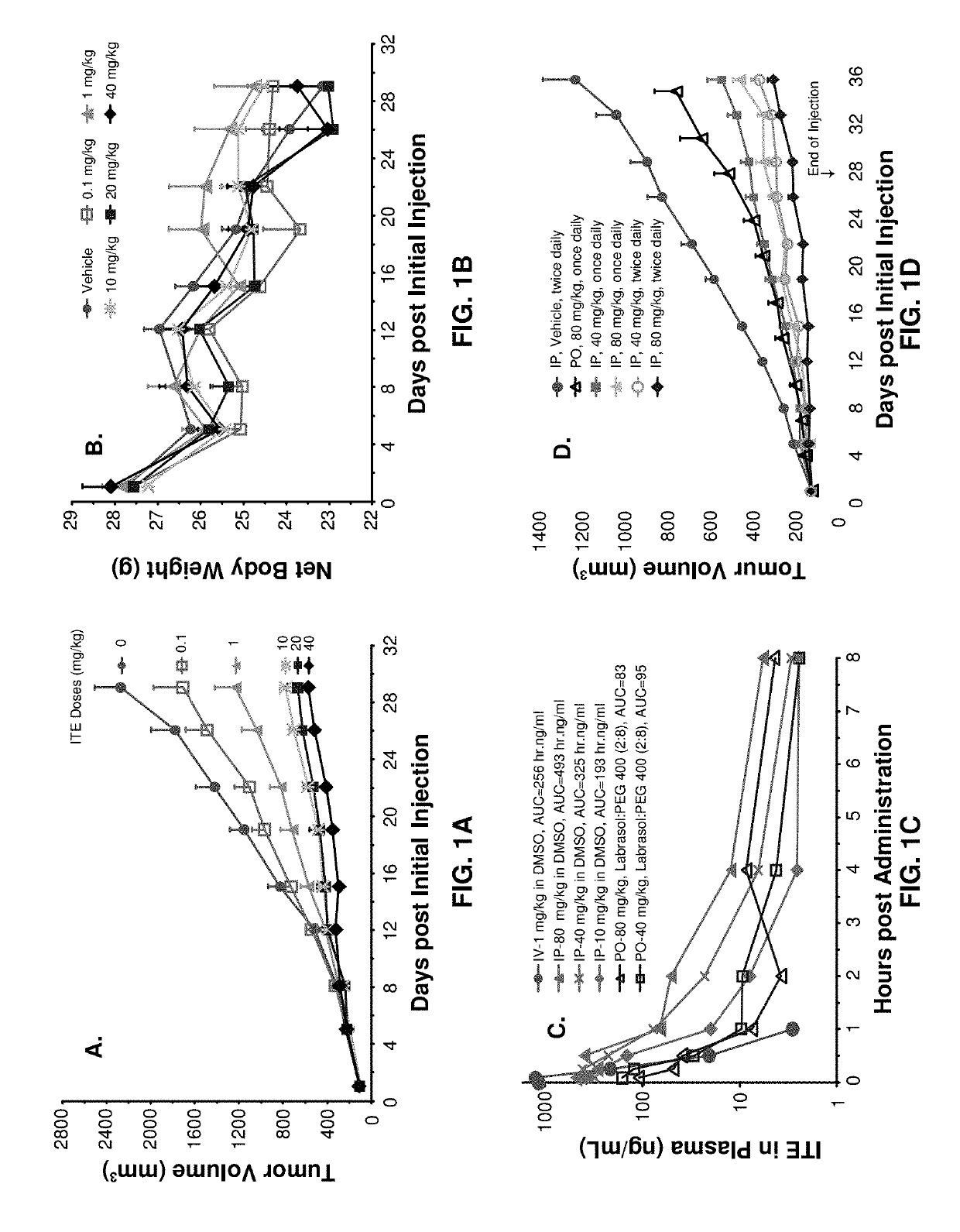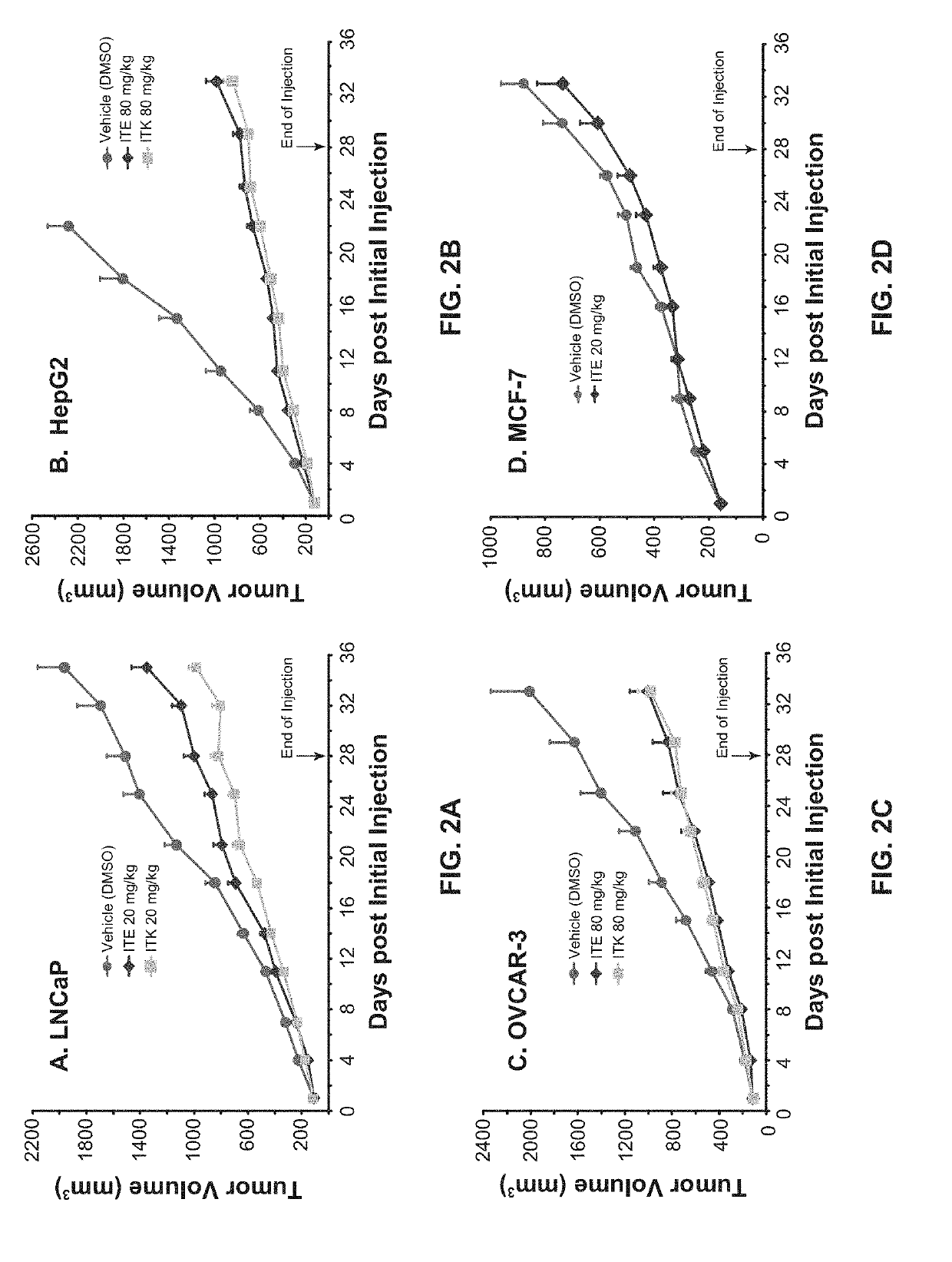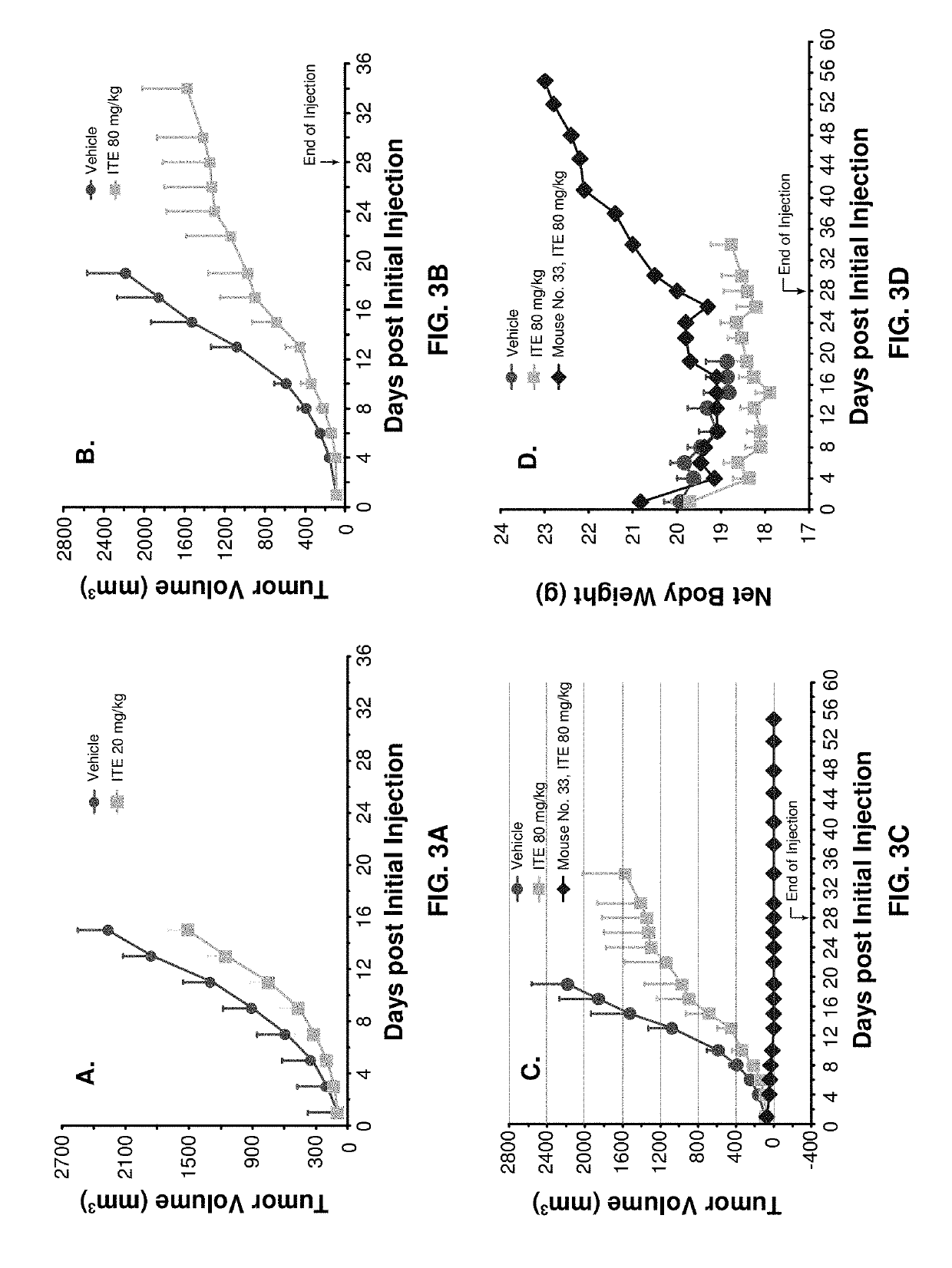Methods of Cancer Treatment with 2-(1'H-Indole-3'-Carbonyl)-Thiazole-4-Carboxylic Acid Methyl Ester
- Summary
- Abstract
- Description
- Claims
- Application Information
AI Technical Summary
Benefits of technology
Problems solved by technology
Method used
Image
Examples
example 1
Materials
[0070]Male BALB / c nude mice (Mus musculus), 6 to 8 weeks of age, were individually marked by ear coding. The animals were kept in laminar flow rooms at a constant temperature of 20 to 26° C. and humidity of 40 to 70% with 1 animal in each polycarbonate cage (300 mm×180 mm×150 mm). The bedding material was corn cob, which was changed twice weekly. Animals had free access to sterile dry granule food and sterile drinking water during the entire study.
[0071]ITE was synthesized by KNC Laboratories Co., Ltd. (Tokyo, Japan). The lot number of the compound is 086-009-2-1 (as lot No.: AHR-001 for AhR Pharmaceuticals). The DMSO (Cat. No.: 0231-500ML) was manufactured by AMRESCO (Solon, Ohio, USA). The Labrasol was purchased from Gattefosse (Saint-Priest, France) and the PEG 400 was supplied by Sigma (St. Louise, Mo., USA).
Methods
1. Efficacy Studies
[0072]All the procedures related to animal handling, care, and the treatment in the study were performed following guidelines approved by ...
example 2
Materials and Methods
[0081]The culture and inoculation of human prostate cancer cell line LNCaP were as described in Example 1. The manipulation for human liver cancer cell line HepG2 (ATCC) was similar as that for LNCaP except that DMEM (instead of RPMI-1640) medium was used, the L-glutamine was not used, and 2×106 cells were used for inoculation into female nude mice. The handling of human ovarian cancer cell line OVCAR-3 (ATCC) was the same as that of LNCaP except that the DMEM medium was used and 5×106 cells were used for inoculation into female nude mice. The human breast cancer cell line MCF-7 (CL-161) is a cloned line from MCF-7 (ATCC) and the growth of its xenografts no longer needs exogenous supply of estrogen. The culture of the MCF-7 cells was similar as that of LNCaP except that MEM medium supplemented with 1 mM non-essential amino acids, 1 mM sodium pyruvate, and 0.01 mg / ml bovine insulin was used to replace RPMI-1640 medium. The inoculation of MCF-7 cells was the same ...
example 3
Materials and Methods
[0088]Murine Lewis lung cancer cell line LLC (ATCC) was cultured as described for LNCaP in Example 1 except DMEM, instead of RPMI-1640, medium being used. Each female C57BL / 6 mice, 6 to 8 weeks of age, was inoculated with 3×105 LLC cells in 0.1 ml of PBS for tumor development. ITE treatment was started when a mean tumor volume reached 80 to 120 mm3. All the other materials and methodologies were the same as that described in Example 1.
Results
[0089]The benefit of using xenograft model is that human cancers can be directly tested on animals. The disadvantage, however, is that the mice have to have defects in their immune systems so that they will not reject human cancer cells. It is obvious, therefore, that this type of models cannot be used to test if ITE can stimulate immune system to dramatically enhance its therapy. A syngeneic model, mouse tumor cells inoculated to mice with healthy immune systems, was then used. At a dose of 20 mg / kg b.w. (i.p. once daily), ...
PUM
| Property | Measurement | Unit |
|---|---|---|
| Molar density | aaaaa | aaaaa |
| Molar density | aaaaa | aaaaa |
| Molar density | aaaaa | aaaaa |
Abstract
Description
Claims
Application Information
 Login to View More
Login to View More - R&D
- Intellectual Property
- Life Sciences
- Materials
- Tech Scout
- Unparalleled Data Quality
- Higher Quality Content
- 60% Fewer Hallucinations
Browse by: Latest US Patents, China's latest patents, Technical Efficacy Thesaurus, Application Domain, Technology Topic, Popular Technical Reports.
© 2025 PatSnap. All rights reserved.Legal|Privacy policy|Modern Slavery Act Transparency Statement|Sitemap|About US| Contact US: help@patsnap.com



